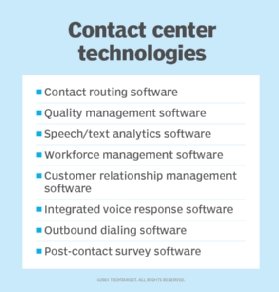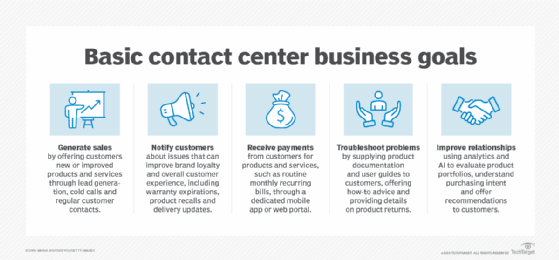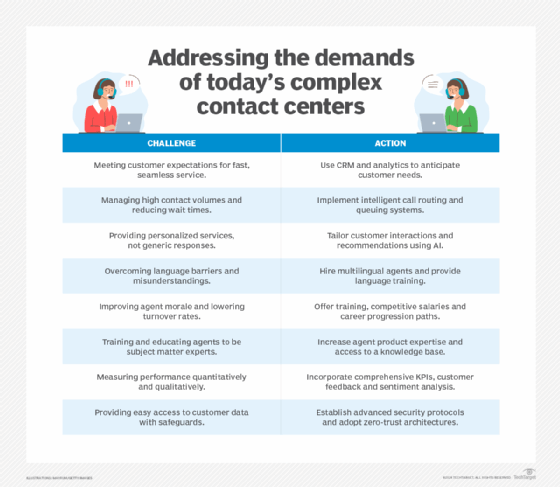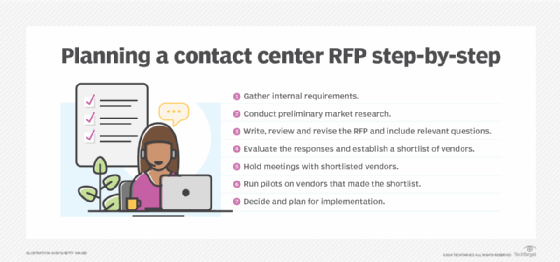7 essential steps to create a contact center RFP
Successful contact center RFPs are built on collaboration, vendor research, countless questions and answers, scorecards, shortlists, trial runs, bakeoffs and the final decision.
Given the pace of innovation among CX providers, one of the more important decisions contact center leaders can make is the selection of their technology partners. That's why it's imperative to conduct and analyze a formal request for proposal before selecting the next provider.
Businesses should cast a wide net and ask detailed questions in their RFPs regarding contact center, AI and CRM platforms as well as communications platform as a service (CPaaS). Answers to these questions should be evaluated quantitatively and qualitatively to arrive at a shortlist of vendors that offer the best fit for the contact center's requirements.
Though companies can buy CX services from different types of providers, most view the contact center as their core platform. Key areas businesses evaluate include the architecture (public cloud, dedicated cloud, on premises or hybrid), integrations (with unified communications, CRM, AI and CPaaS) and AI offerings (integrations with third parties or native).
A contact center RFP gets the answers and information a business needs to make the right decision for its operations. The RFP responses determine the organization's CX capabilities, potential integrations, ability to innovate and more.
7 steps to establish a contact center RFP
An RFP is a complex project with many moving parts. To use everyone's time wisely, contact center management should treat RFP development as a formal project, assign a project manager and assemble a project team. Project managers coordinate between team members, schedule meetings, set timetables, adjust when issues arise and keep the project on track. They also typically communicate with vendors and partners who help develop the RFP.
Contact center RFP projects take longer than expected, simply because of their complexity and importance. Considering that only one in five consumers says customer service is improving, the technology behind contact center operations is becoming more and more vital. Depending on the contact center's size, the RFP process from first meeting to final decision typically ranges from six to 18 months, including running pilots of the final contending vendors. In years past, companies could complete a full RFP evaluation in as little as three months -- quite difficult now, given all the technologies inherent in the contact center. These seven steps are essential in shaping a successful RFP.
1. Gather internal requirements
No one can write an effective contact center RFP without talking to the people affected by the decision. The project team should request business requirements from sales and marketing teams, contact center supervisors, and customer service and sales agents who will be using the technology. Ask some of the following questions:

- Does the sales team want to collaborate with contact center supervisors on the latest outbound campaigns?
- Do supervisors need analytics or video technology to manage remote teams?
- What do contact center agents want in a user interface?
- Who will use voice of the customer (VoC) data and how?
- Will AI guide proactive notifications?
- How will teams use AI to assist contact center agents or sales reps?
This kind of input serves as a basis for the RFP questions that vendors must answer and determines which features are either mandatory or nice to have.
Internal requirements also should include input from the cybersecurity and IT teams. Security experts can provide a list of capabilities a provider must have. The IT staff will compile a technical checklist. This input can reduce the analysis time by eliminating providers that don't meet technical, integration, security or compliance requirements.
2. Conduct preliminary market research
All too often, CX leaders don't cast a wide net for their RFP because they already have a few vendors in mind for contact center platforms. To start, they must research the market broadly either online or through an analyst or consultant partner. New players arrive and existing providers update capabilities to address market requirements. A project team should examine about 20 contact center platform vendors.
In addition, this phase enables management to learn about new applications and innovations in contact center services, AI capabilities, analytics, VoC, pricing, partnerships and integrations. That information can shape plans for the company's CX strategy, based on what is and what will be available from technology providers.
Some businesses initially conduct a request for information (RFI), which is a lightweight version of an RFP and provides enough feedback to know whether to continue exploring options with specific providers. When an analyst firm does RFIs for businesses, it reaches out to a wide range of vendors and gathers information about their offerings, which can help narrow the initial field of 20 vendors to three to five finalists.

3. Write the RFP and ask more questions
Contact center leaders should give the project team enough time to craft an RFP that contains all the team's relevant questions and then some. This process requires collaborative writing and reviewing, as well as involvement from sales, marketing, customer service, implementation, security, procurement and other parts of the company. RFPs don't have set rules for how many questions to include, but 100 to 300 questions is relatively standard.
The technology provider and the project team that analyzes the RFP response can benefit from an RFP that's divided into core sections, including technology capabilities, partnership ecosystem, costs, service-level agreements (SLAs), integrations and applications. Both sides work on the RFP in parallel. Key contact center RFP questions to ask the provider include the following:
- What is the maximum number of concurrent seats you support?
- What architectures do you support currently: on-premises, cloud or hybrid?
- What architectures do you plan to support in the future?
- How does your service address the requirements of small, remote or home offices?
- What countries do you support directly or via partnerships?
- What options do you offer businesses to connect to your platform?
- Can you provide an overview of your AI capabilities today and what's on the roadmap?
- What is included in contact center agent licenses?
- What generative AI capabilities do you offer?
- What large language models do you support?
- What support do you provide for agent assist?
- What types of AI applications do you offer and how do you deliver them (direct or via a partner): transcription, translation, voicebots, chatbots, AI-enabled routing, etc.?
- Can you describe your SLAs and, if you miss an SLA, can we get out of our contract without being penalized?
- What specific features do you offer? (Note: The project team should list all features important to their organization.)
- What customer interaction channels do you support currently and what are your future plans?
- Do companies manage your platform with built-in tools or third-party specialty tools?
- Can you describe your security model for cloud services? (Note: The project team should include sub-questions concerning encryption algorithms, whether the algorithms support voice or video recognition to decrease fraud, and other relevant queries.)
- What is your mean time to repair in the event of an outage?
- Can you describe your technology roadmap and highlight areas you believe differentiate you from competitors?
- Do you offer professional services internally, through partners or both?
- Do you provide agent and supervisor training and what's the cost?
- What is your price range per agent, per month, what is included on the low end and the high end, and can you provide list pricing and typical retail pricing?
- What enterprise applications do you integrate with currently and what's planned for future integrations?
- How many customers do you have and what's the average business size of your customers?
- Can you provide customer references, including current businesses who left or selected a different vendor?
4. Evaluate responses and create a vendor shortlist
The project team can develop a weighted scorecard to evaluate the answers from contact center technology vendors. The weighted scorecard provides a quantitative score for each vendor based on their answers to multiple-choice, numeric or short-text questions that can be quantified. Then qualitative answers to open-ended questions can help further identify the shortlist candidates. The shortlist should include three vendors.

5. Meet with shortlisted vendors
Businesses should invite the vendors on the shortlist to meetings so they can answer more detailed questions. The vendors typically present their key differentiators and sometimes provide nondisclosure information at these meetings. The project team can ask questions and use this additional information to determine a finalist.
Additionally, organizations can conduct a pilot or trial run with the shortlisted vendors. Nearly all vendors offer trial products, licenses and services free of charge. Trial runs can help IT and contact center management determine which products align best with the company's current technologies and operational processes. This interim step also enables businesses to test the reliability and quality of the products and services.
6. Run pilots on vendors that make the shortlist
Once the project team has narrowed the list to two or three providers, challenge the vendors to set up and run pilots that show the operational team how well the technology works. Often, companies will conduct a "bakeoff" so each vendor has an equal amount of time to showcase what they can deliver.
7. Decide and plan for implementation
When the project team selects a finalist, it presents its choice of contact center technology to management, along with justification for that choice. After all relevant parties agree on the provider, the company can prepare for implementation.

4 commonly overlooked things in contact center RFP plans
As companies prepare for an RFP project, they sometimes overlook key best practices, including the following:
- Allow ample time at the outset to establish the right priorities and questions. Often, companies are rushed to issue their RFP, but it's better to spend extra time up front with a well-constructed RFP that will elicit the necessary results.
- Require vendors to answer questions consistently so it's easier to compare answers equally. Using a survey tool often can help gather answers and compare them later.
- Decide whether to accept attachments and links that address questions but use them as complementary materials not as the primary answer. More work will be required of the project team to read the materials and compile an abridged answer that can be compared to other answers.
- Empower the project leader to decide when the entire team needs to be involved and when a select group is sufficient. The larger the group involved with making decisions, the longer the decision-making process.
Robin Gareiss is CEO and principal analyst at Metrigy, which conducts research and advises enterprises and technology providers.







